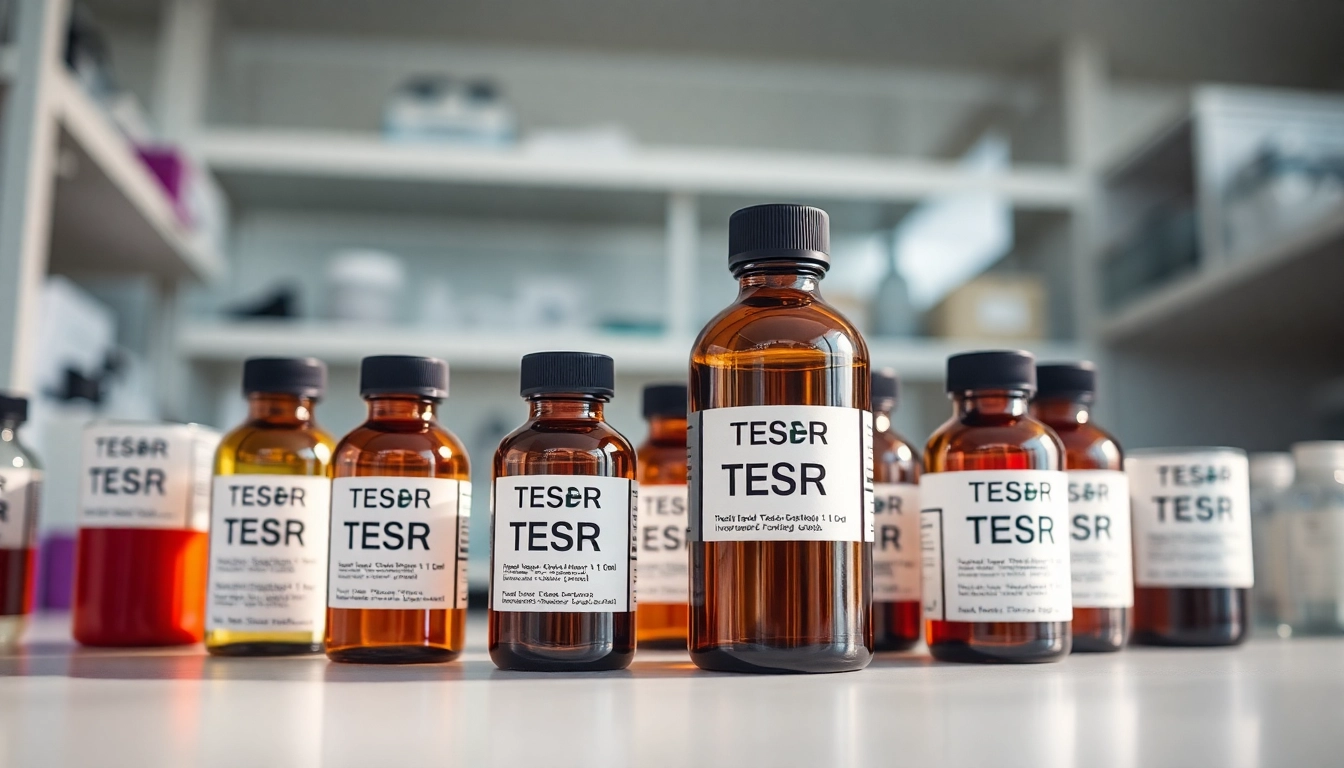Enhancing Stem Cell Research: Understanding TeSR™ Feeder-Free Media Solutions

Introduction to TeSR™ Feeder-Free Media
The field of stem cell biology has evolved tremendously over the past couple of decades, especially with the advent of pluripotent stem cells (PSCs). These cells hold immense promise for regenerative medicine, drug discovery, and models for studying diseases. Central to realizing this potential is the culture media used for maintaining and differentiating PSCs. Among the leading products in this domain is the TeSR™ family of feeder-free media, which include formulations designed for human embryonic stem (hES) and induced pluripotent stem (iPS) cells. This article dives deep into the features, benefits, and applications of TeSR™ media, as well as insights from leading experts in stem cell research.
What is TeSR™ Media?
TeSR™ media represent a comprehensive family of feeder-free culture media designed specifically for the growth and manipulation of human pluripotent stem cells. These media not only facilitate the maintenance of stem cells but also their differentiation into various cell types. The cornerstone of this media line lies in its derivation from the foundational work of James Thomson’s laboratory, which was the first to establish fully defined, feeder-free culture conditions for human ES cells.
Key Benefits of Feeder-Free Cultures
Feeder-free cultures, like those provided by the TeSR™ family, present multiple advantages:
- Consistency: TeSR™ media are formulated using rigorously pre-screened components, ensuring high batch-to-batch consistency.
- Reduced Contamination Risk: The elimination of feeder layers which often harbor interferences such as pathogens increases the reliability of results.
- Controlled Environment: Defined media allow for better control over the culture conditions, leading to reproducible results.
- Diverse Applications: From basic maintenance to advanced differentiation protocols, the versatility of TeSR™ media supports numerous research avenues.
Applications in Stem Cell Research
TeSR™ media play a pivotal role in a variety of applications, including:
- Induction of Pluripotency: They are instrumental in the reprogramming of somatic cells into induced pluripotent stem cells (iPSCs).
- Cell Maintenance: Regular upkeep of hESCs and iPSCs is streamlined, enabling succinct and repeatable research outcomes.
- Cell Differentiation: Researchers utilize specifics of the TeSR™ chemistry to direct stem cells into various differentiated states, including neurons, cardiomyocytes, and pancreatic cells.
- Cryopreservation: Selected TeSR™ media also allow for efficient freezing and thawing of stem cells without significant loss of viability.
Overview of TeSR™ Product Line
TeSR™ Family of Media Products
The TeSR™ media products include several specialized formulations, each tailored for distinct aspects of hPSC culture:
- mTeSR™1: The original and most widely published (over 1100 peer-reviewed publications) formulation for feeder-free culture.
- mTeSR™ Plus: An enhanced version of mTeSR™1 with stabilized components aimed at preserving cell quality during media changes.
- TeSR™-E8™: A defined low-protein formulation that simplifies maintenance by utilizing minimal essential components.
- TeSR™-AOF: A xeno-free product aimed at researchers requiring assurance of animal-origin material absence.
- ReproTeSR™: A custom medium designed specifically for reprogramming fibroblasts and hematopoietic cells.
Advantages of Each Formula
Each TeSR™ formula has distinct advantages:
- mTeSR™1: Excellent for standard hPSC maintenance, it ensures high colony quality and pluripotency.
- mTeSR™ Plus: Reduces the need for daily media changes and contains enhanced buffering capacity, which helps in maintaining pH.
- TeSR™-E8™: Streamlined focus on essential nutrients makes it easier to use while maintaining cell health.
- TeSR™-AOF: Ensures compliance with the stringent requirements for animal products, providing peace of mind regarding zoonotic risks.
- ReproTeSR™: Designed to promote high efficiency in cellular reprogramming, proving particularly useful in study designs focusing on cellular plasticity.
Comparison: mTeSR™ Plus vs. mTeSR™1
While both formulations share a common foundation, there are significant differences:
| Feature | mTeSR™1 | mTeSR™ Plus |
|---|---|---|
| Cell Maintenance Frequency | Daily media changes required | Preserves quality with less frequent changes |
| Buffering Capacity | Standard | Enhanced buffering for pH stability |
| Component Stability | Less stable | More stable with improved formulations |
Best Practices for Using TeSR™ Media
Cell Maintenance Techniques
Utilizing TeSR™ media efficiently requires comprehension of best practices. Routine monitoring of cell morphology and viability is essential:
- Regular Passaging: Maintain optimal cell density to avoid overcrowding, which can lead to differentiation.
- Monitoring pH Levels: Regularly check media pH, particularly with mTeSR™ Plus, which stabilizes pH to enhance cell health.
- Temperature Control: Ensure consistent culture temperatures around 37°C for ideal growth conditions.
Guidelines for Differentiation
When differentiating hPSCs, specific guidelines must be adhered to align with experimental goals:
- Start with Healthy Cultures: Cells that are actively proliferating are more likely to differentiate effectively.
- Use of Specific Growth Factors: Incorporate required growth factors tailored to the desired lineage outcomes, such as FGF or BMP proteins.
- Culture Environment Orientation: Create conditions that mimic developmental stages associated with the targeted differentiation.
Optimal Culture Conditions
Establishing optimal culture conditions is not just about media selection:
- Aseptic Technique: Always maintain robust sterile practices to prevent contamination.
- Medium Quality: Regularly validate the quality of media used, ensuring there are no visible precipitates or changes in clarity.
- Humidity Control: Ensure humidity levels in incubators to prevent evaporation of culture media.
Insights from Experts in the Field
Dr. Joseph C. Wu on Hematopoietic Differentiation
Dr. Joseph C. Wu, a prominent investigator in regenerative medicine, emphasizes the importance of using TeSR™ media in generating hematopoietic lineages from iPSCs. His research demonstrates the robust capabilities of TeSR™ formulations in successfully directing pluripotent cells towards hematopoietic progenitors, highlighting the need for precise cytokine signaling to ensure effective differentiation.
Dr. Andrew Elefanty on Endoderm Creation
Dr. Andrew Elefanty discusses the benefits of utilizing TeSR™ media in conjunction with specific growth factors to promote definitive endoderm formation from hPSCs. His studies have shown increased efficiency and reproducibility in differentiation protocols, allowing for the generation of liver and pancreatic progenitors, thus opening avenues for cell replacement therapies.
Dr. Christine Mummery on Cardiomyocyte Differentiation
Dr. Christine Mummery’s research into cardiomyocyte differentiation provides insights into the methodological refinements enabled by TeSR™ media. Her findings underscore how optimized conditions can significantly enhance the yield and functionality of differentiated cardiomyocytes, suggesting that personalized medicine could greatly benefit from such tailored applications.
Future Directions and Innovations in TeSR™ Media
Staying Ahead in Regulatory Compliance
With growing regulatory scrutiny in biotech, the future of TeSR™ media lies in meeting rigorous quality standards, particularly in clinical applications. Products like mTeSR™ Plus and TeSR™-AOF, developed under cGMP regulations, are proactive strategies aimed at addressing regulatory challenges while ensuring cell safety and efficacy for eventual clinical use.
Emerging Trends in Stem Cell Technology
The landscape of stem cell technology is continually changing, influenced by advancements in genomics and proteomics. TeSR™ media leverage these innovations to enhance formulations, improve specificity for targeted differentiation, and provide tailored solutions for various research applications. Continuous feedback loops between experimental outcomes and media optimization will shape future developments.
Contributions to Clinical Applications
As research progresses beyond foundational science into clinical applications, the versatility of the TeSR™ media product line prepares researchers to translate their findings into real-world therapies, bridging the gap between lab findings and patient care.



Leave a Comment